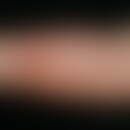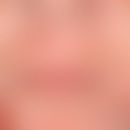Synonym(s)
DefinitionThis section has been translated automatically.
Frequently used styling product that is sprayed over the finished hairstyle to strengthen it. The basic ingredients of the hair setting products are film formers but also natural polymers such as chitosan, water and alcohol, especially ethanol, as solvents. Hairspray is the classic aerosol product.
General informationThis section has been translated automatically.
Hair setting agents: The main ingredients of hair sprays are polymers of vinylpyrrolidone and vinyl acetate in concentrations of 2 to 5%. They serve as film formers and ensure the strength of the hairstyle. The higher the concentration of these polymers, the higher their strength. Polymer compounds in hair sprays are on the one hand washable (hydrophilic polymer polyvinylpyrrolidone), on the other hand also hydrophobic, water-repellent (due to the hydrophobic polymer polyvinyl acetate). The abbreviation is "VP/VA copolymer (vinylpyrrolidone/vinyl acetate).
Acrylates as hair setting agents: Some products with strong setting properties contain acrylate based hair film formers like octyacrylamide. These strong hair film formers are also called hair lacquers.
Phthalates as softening agents: Another ingredient of hair setting products can be the softening agent diethyl phthalate (DEHP), which is a low-molecular phthalic acid ester and is considered to be a health hazard. Such compounds are suspected to have a "hormone-like" effect on the human organism.
Solvents: Ethanol is the preferred solvent, water less frequently.
Propellant gases: Propellant gases make up a large proportion of the "hairspray mass". The following are used: propane, butane and/or simple ether compounds such as dimethyl ether. Hairsprays can cause respiratory problems due to their typical technology, i.e. the fine mist of solid and liquid substances sprayed, which can cause attacks of bronchial asthma in sensitive people in extreme cases. This effect can be further enhanced by the different ingredients of the aerosols. Pump sprays are free of propellant gases.
Glosses: Hair sprays contain as further hair care products glosses such as silicone oils, "silk proteins" or various vegetable-based oils. It is not unusual for argan oil to be offered as a high-quality vegetable oil.
Fragrances: The vast majority of hairsprays contain different fragrance components (approx. 0.2%). These are particularly important from an allergological point of view. Oak moss, hydroxycitronellal and lyral belong to the fragrances that are rather risky from an allergological point of view. Some hair sprays contain "polycyclic musk compounds". These additives are supposed to prolong the fragrance of the sprays, but they also accumulate in the fatty tissue and in the breast milk!
You might also be interested in
Ingredient(s)This section has been translated automatically.
- VA/Crotonates copolymer (copolymer of crotonic acid (2-butenoic acid) and vinyl acetate)
- VP/Hexadecene copolymer (copolymer of vinylpyrrolidone and hexadecene)
- VP/VA copolymer (copolymer of vinylpyrrolidone and vinyl acetate)
NaturopathyThis section has been translated automatically.
Alternative (natural) hair setting lotion for allergy sufferers
Beer (pour 1 glass of beer over your hair and let it dry; the smell of beer will disappear completely) is a good alternative hair setting agent. It gives the hair hold and a fine shine. Beer can also be filled into a spray bottle and sprayed on the hair.
Honey water. 250ml water is heated to 40 degrees C, dissolve a teaspoon of honey in it, add 1 dash of fruit vinegar.
Sugar water. 250ml of water is heated to 40 degrees C, dissolve a teaspoon of sugar in it. Pour the mixture into a spray bottle and spread it on the hair. If the sugar content is higher, the hair will become much harder.
Egg whites. Beat the egg whites into stiff beaten egg whites, apply to the hair and allow to dry. Egg whites are recommended as a good alternative, especially for elaborate updoes.
Note(s)This section has been translated automatically.
History: The raw material for the production of hairspray was shellac, the secretion of the scale insect, mixed with fragrances and chlorofluorocarbons as propellants.
LiteratureThis section has been translated automatically.
- Loretz L et al (2006) Exposure data for personal care products: hairspray, spray perfume, liquid foundation, shampoo, body wash, and solid antiperspirant. Food Chem Toxicol 44:2008-2018.
- Wright JL et al (1981) Lung disease due to abuse of hairspray. Arch Pathol Lab Med 105:363-366.




